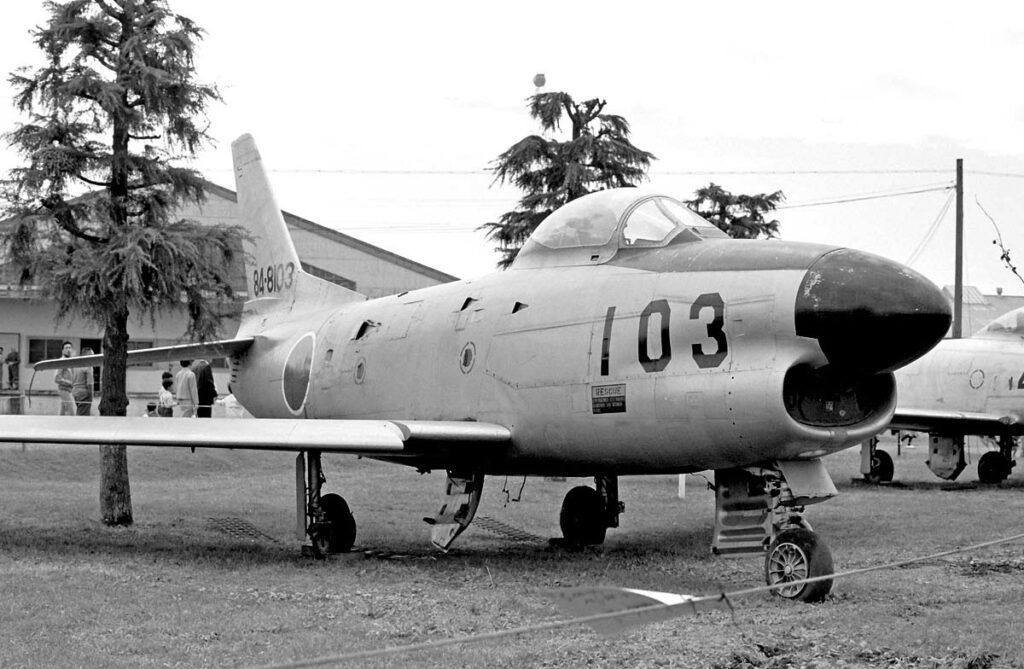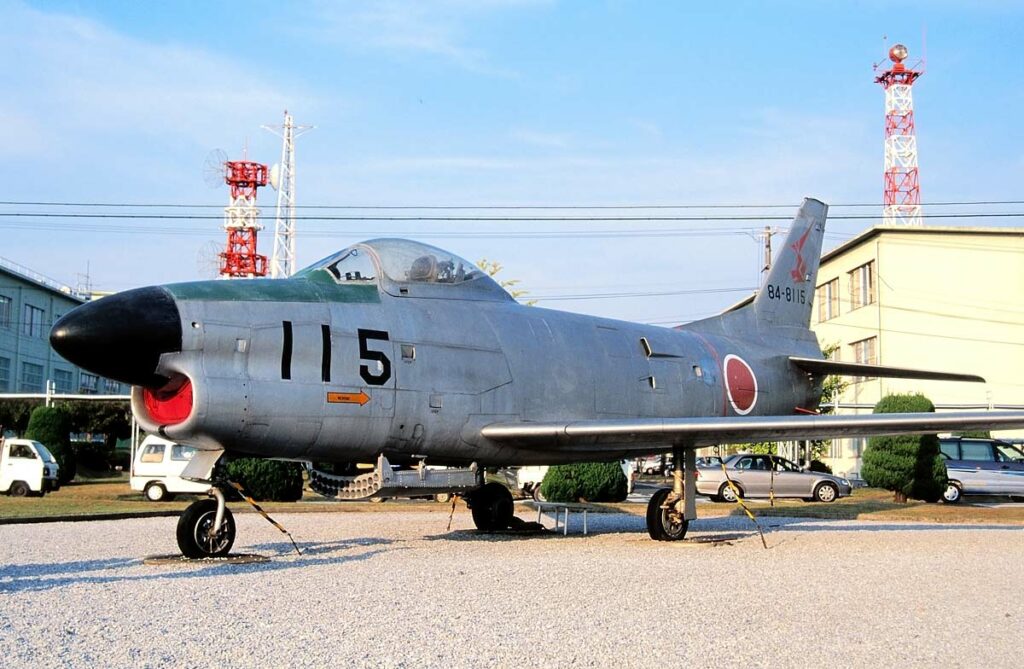The F-86D Sabre, an advanced all-weather interceptor, epitomizes Cold War-era jet technology with radar-guided air-to-air missiles and Mach-breaking speed.
In brief
The North American F-86D Sabre, a variant of the legendary F-86 Sabre, was a groundbreaking jet fighter aircraft. Developed in the late 1940s and early 1950s, it was a response to the evolving needs of aerial combat during the Cold War. Known for its speed, agility, and advanced radar and fire-control systems, the F-86D distinguished itself as a capable all-weather interceptor. It featured significant improvements over its predecessors, including an afterburning engine, a larger fuselage to accommodate radar equipment, and a distinctive radome. The F-86D played a crucial role in shaping air combat strategies and was widely used by the United States Air Force and several NATO allies.
The North American F-86D Sabre, a key player in the pantheon of jet-powered fighters, was a product of technological innovation and strategic necessity. Its development marked a significant leap in aviation technology and military tactics.

History of Development
The North American F-86D Sabre was developed in an era marked by rapid advancements in aviation technology and escalating tensions of the Cold War. The need for a superior air defense system was paramount for the United States, leading to the development of this advanced fighter jet.
Launched by North American Aviation in response to the U.S. Air Force’s requirement for a high-performance interceptor, the F-86D’s development program began in the late 1940s. The aircraft first took to the skies on December 22, 1950. This was a period characterized by the urgency to gain air superiority in the face of potential Soviet threats.
The F-86D, also known as the “Sabre Dog,” was a significant upgrade from its predecessor, the F-86 Sabre. It featured a more powerful engine, a larger fuselage to house sophisticated radar equipment, and an arsenal of rockets, making it a formidable force in air combat. The aircraft’s development was not just a response to technological advancements but also a strategic move to counter the growing Soviet aerial capabilities.
Design
The design of the North American F-86D Sabre represented a blend of aerodynamic efficiency and advanced technology. Measuring 40 feet 4 inches (12.3 meters) in length with a wingspan of 37 feet 1.5 inches (11.3 meters), it was larger than its predecessor. The aircraft was powered by a Pratt & Whitney J47-GE-17 turbojet, capable of producing 7,500 lbf (33 kN) of thrust, propelling the aircraft to speeds exceeding Mach 1.
One of the key design features of the F-86D was its radar-equipped nose, which housed the AN/APG-36 radar. This allowed the aircraft to lock onto targets in adverse weather conditions, a significant advantage in aerial combat. The aircraft’s armament was another notable aspect, with 24 rockets housed in a retractable tray, providing formidable firepower.
The design, however, had its drawbacks. The reliance on rocket armaments limited its versatility, and the radar system, while advanced, added weight and complexity. Nevertheless, the F-86D represented a significant advancement in fighter aircraft design, setting a standard for future developments.
Performance
The performance of the F-86D Sabre was remarkable for its time. The aircraft had a maximum speed of 693 mph (1,115 km/h) and could reach altitudes up to 49,600 feet (15,100 meters). Its range was approximately 800 miles (1,287 kilometers), extendable with external fuel tanks.
Compared to its contemporaries, the F-86D was a powerful aircraft. Its ability to break the sound barrier and its advanced radar system gave it an edge over many of its rivals. This superiority was evident in various confrontations and exercises, where the F-86D consistently outperformed competing aircraft from both the Eastern and Western blocs.
Variants
The F-86D Sabre saw several variants during its service life. These included the F-86K, adapted for NATO use with a simplified fire-control system, and the F-86L, an upgrade of the D model with a more advanced radar and fire-control system. Each variant had specific modifications tailored to the operational requirements of different air forces, but all maintained the core strengths of the original design.

Military Use and Combat
In its military service, the F-86D Sabre was primarily used as an interceptor. Its armament, consisting solely of rockets, was specifically designed for air-to-air combat. The aircraft saw extensive use during the Cold War, particularly in defending American airspace against potential Soviet threats.
The F-86D did not see combat in the Korean War, as its development occurred just after the conflict. However, it was a key component of NATO’s air defense strategy during the 1950s and 1960s. The aircraft was also sold to several U.S. allies, expanding its presence globally.
The Sabre was eventually phased out of active service in the U.S. by the late 1960s, replaced by more modern aircraft like the F-102 Delta Dagger and F-106 Delta Dart. However, some countries continued to use the F-86D into the 1970s.
The North American F-86D Sabre was more than just a fighter jet; it was a symbol of the technological and strategic advancements of its time. Its development and deployment illustrate the complexities of aerial combat during the Cold War and the relentless pursuit of air superiority. The Sabre Dog’s legacy is not just in its technical achievements but also in its contribution to shaping modern aerial warfare tactics and strategies.
Back to the Fighter Jet section.